Author: Aliwyn Cole.
One typical day in London, when I was rushing up the stairs to catch my train at Earl’s Court, I was suddenly prevented from making my hurried way by a woman, hobbling and staggering in a winding path in front of me. She wasn’t drunk, nor was she old, nor did she have any physical ailments; she was only physically challenged in the fact that she was wearing a pair of stilettos which she clearly could not walk in. To be honest, I was really quite annoyed by this situation: not only had I missed my train and so had to wait another 10 minutes, but I was also frustrated by the fact that despite all our feminist movements and fights for equality, women continue to hobble and restrict themselves in uncomfortable and impractical footwear.
Now maybe you think that I am being unfair in my feelings of infuriation at this situation, and I apologise if I am offending many women here who like to wear heels. Indeed, I have some female, and perhaps even male, friends who walk very well in high heels, and I admire them very much for that. Personally speaking, I prefer trainers and flat shoes simply because I find them more comfortable. Due to a family trait from my father’s side of the family, I have inherited skinny ankles and also skinny bad feet. When I say ‘bad’, what I mean is that my feet do what they are there to do, but need to be comfortable in order to function and carry the weight of my body around while completing my everyday errands of survival in this hustling and bustling modern world. Yes, I have worn heels in the past, but now I have realised that my health and freedom are my priorities, and heels just do not allow me to do what I need to do every day in order to live my life comfortably and efficiently.
But this is the point I want to put forward: whether we wear heels or not should be a matter of personal choice. If someone feels better wearing shoes which make them taller, more elegant, more powerful, and so on, and they can walk in them without any discomfort, then that is a matter that only each individual can decide for themselves. But by personal choice I really do mean pure, unadulterated, uninfluenced, and utterly honest, personal choice and preference. I am not so sure that many women are not making decisions as to what they wear as a result of both conscious and subconscious pressures and influences of society, media, boyfriends, and images of perceived sexual attractiveness. If I am completely straight with myself, I wore heels in the past because I felt that it was necessary to do so in order to be attractive and stand out from the crowd of beautiful women; I was younger and more susceptible to influences of what is perceived as attractive or respectable, and so was I really making a choice based on what I myself truly wanted or felt?
Indeed, personal choice was not an option for Nicola Thorpe one day in December 2015, when she arrived for work as a receptionist for the finance firm PwC wearing a smart, flat pair of shoes, only to be informed that she was required to wear heels of between 2 and 4 inches. Now her reply was the same as my feisty retort would have been, as to if men would be expected to do the same. Of course, she was laughed at in reply, but wasn’t the point she made a valid one? Employed as a temp by the firm Portico, she was informed that she had signed a contract stating that she must adhere to the dress code, which included wearing heels. So by not wearing heels, she had breached the contract and, as a result, she was sent home without pay.
Thankfully, Ms Thorpe had the guts to take this further, and created a petition against recruiters forcing women to wear high heels in the work place in order to keep their jobs. I myself signed this petition, not only because the fact that this is happening in the 21st century makes me extremely angry, but also because I know how I would have felt if this had been me. Like so many people at present who are signed on zero hours contracts and therefore have no choice but to accept the rules of their employer due to poverty and desperately having to work, I would have felt extremely anxious and at the same time furious. I have rent and bills to pay but am at a stage in my financial security where I am probably 2 months away from being homeless if I lost my job. So the reality is that I would have no choice if required, but to stomp around all day like a blue-arsed fly in order to get things done under some bossy manager’s orders, on a pair of points as if doing a balancing trick for a circus of prize prances. Not only is this mental stress but also physical stress.
Nicole Thorpe was obliged to wear heels between 2 and 4 inches for her job.

Described as “baffling” by The Equality and Human Rights Commission, this kind of dress code remains a reality for many female members of the workforce, whether against the law or not. In fact, the aforementioned petition against companies being allowed to force women to wear high heels in the workplace received 152,420 signatures, and was debated in Parliament on the 6th of March 2017. As a result, a law was passed which now prevents employers from forcing female employees to wear high heels as a requirement of a job. But is this law always enforced, and can all employers be effectively regulated? It would seem that the classification of female employees as sexualised members of a team continues, as was revealed on the 7th of February 2018, by the Daily Mail:
“Women hosting stalls at the world’s biggest gambling conference are being told to wear ‘nothing more than swimsuits’ to attract customers while their male colleagues dress in suits.”
So when did high heels become an image and statement of power, respectability, and sexuality?
“I do everything the man does, only backwards and in high heels!” Ginger Rogers.
Perhaps the social expectation that an attractive woman should wear heels started with the film industry and screen images. Artistically, it is common knowledge that heels give the visual illusion of a lengthened leg and a taller, thinner frame, thereby counteracting the effects of the photographic image which can shorten, fatten, and make the human figure appear box-like. But this comes back down to women being judged according to what they look like. So, I am expected to do everything that a man does, but in uncomfortable clothes because I must also look attractive?
How many of us have felt the excruciating pain of our feet rammed into pointy toes while walking and dancing on the raised balls of our feet. Or if we simply haven’t been able to walk on raised points, then felt less attractive as a result and wished that we could. Even more annoying, how many of us have been told by a man that we should wear heels. I would like to think that there is more to a woman than just looking attractive. But of course, as is in a woman’s nature, I do strive to look my best: I wear make-up, I worry about my hair, and I look at fashion magazines. However, I do think there are so many more options than just wearing high heels which makes a woman attractive. Being considered attractive should not require enduring pain and potentially damaging effects to health, as a result of wearing uncomfortable clothing and footwear.
 First of all, perhaps we should remind employers of the extensive list of health and safety regulations, and the rather lethal combination of impractical footwear and the walkways and floors of their business and work premises. Any competent and responsible business owner must surely know about the risks of combining wet, slippery floors with precarious heels and soles of shoes badly designed for the environment. Let’s be frank and state that this potentially creates a “risk of death” situation. I have often noticed this myself when walking along the pavements of so many cities, and, in particular, the tube platform in London.
First of all, perhaps we should remind employers of the extensive list of health and safety regulations, and the rather lethal combination of impractical footwear and the walkways and floors of their business and work premises. Any competent and responsible business owner must surely know about the risks of combining wet, slippery floors with precarious heels and soles of shoes badly designed for the environment. Let’s be frank and state that this potentially creates a “risk of death” situation. I have often noticed this myself when walking along the pavements of so many cities, and, in particular, the tube platform in London.
Now let’s also examine how high heels can affect the physical frame of the human body. By pushing your feet into a position of walking on the toes with the ball of the foot raised, you are throwing the alignment of your spine off-kilter. Over time, this can create back problems. We are also putting our hips at risk as well, which is a major health problem for so many women. Not only this, but many high heels available on the high street are narrow at the toe, and so the toes are crammed into a shape which surely must affect blood circulation, which in turn affects the skin, manifesting in blisters, corns and calluses. Is this not similar to the ancient Japanese practice of foot-binding? The list of health afflictions from wearing uncomfortable shoes goes on and on.
These health issues have, in fact, been examined and confirmed by osteopathic research and studies. Dr Surve is the co-director of the Texas Centre for Performing Arts Health, as well as an associate professor at the University of North Texas Health Science Centre of Osteopathic medicine. He helps dancers and other frequent heel wearers treat and counteract the head-to-toe toll of wearing high heels. According to Dr Surve:
“From an osteopathic perspective, we’re looking for the body to be centred from head to toe. High heels put the foot at an angle and pull muscles and joints out of alignment, so the effects aren’t limited to the feet … It’s not unusual for people who spend lots of time in high heels to have low back, neck and shoulder pain because the shoes disrupt the natural form of the body.”
Structurally, the plantar fascia in the foot is connected to the calf muscle, which in turn connects to the hamstring. The hamstrings attach to the pelvis and low back, which is why wearing high heels can make your back ache along with your feet. Furthermore, walking on the balls of your feet will shift your centre of gravity forward, forcing you to arch your back when you stand and further contributing to back pain. Therefore, sciatica is an extremely real and common physical ailment which results from wearing heels, as confirmed by Carrie Bowler, an osteopathic physician for One Medical Group, on 19th January 2012:
“Over time, wearing high heels can shorten the muscles in your calves and lower back, leading to pain and muscle spasms. An overarched back can cause a forward head posture, which strains neck muscles. … It’s not uncommon for heel-loving women to experience sciatica”
At least Prince was prepared to wear heels himself, which is what I now say to any man who dares to suggest that I cripple myself in order to fulfil his sexual fantasies. When we examine the reasons behind his death in 2016, we can read that he was reputedly taking the opioid Fentanyl in order to numb the severe hip pain he had as a result of dancing and jumping off speakers in heels. Now of course this is a bit extreme, but so is walking and standing around all day long, day after day, during the office commute, at work, or on a night out.
“I don’t know who invented the high heel, but women owe him a lot.” Marilyn Monroe.
When examining the origin and evolution of heeled shoes throughout history, we find that men may have worn heels, and for similar reasons as Prince and many more of us: height, power, perhaps self-esteem.
There are a number of theories as to the first use and reasons for the birth of a high heel on footwear, with function being the original reason. The most common belief is that heels originated for the practical purpose of horse riding. Elizabeth Semmelhack, curator at Toronto’s Bata Shoe Museum, traces the high heel to Persian horse riders in the Near East who used such footwear for functionality, because they helped hold the rider’s foot in stirrups. She states that this footwear is depicted on a 9th-century ceramic bowl from Persia.
Other reports traces heels even further back to ancient Egypt in the second millennium B.C., when supposedly butchers wore high heels for the practical purpose of keeping their feet clear of blood while slaughtering animals. In a similar context, I once heard that the French had created heels in Versailles; apparently, it was the upper classes who wore extravagant heels in order to raise their feet above the ground which had been used as a toilet area in the absence of toilet facilities within. This seems to link with the theory that perfume was also invented by the French to hide the smell.
In reference to Versailles, perhaps one of the most famous examples of a man wearing heels in history is set by King Louis XIV, who was the king of France between 14th May 1643 and 1st September 1715. The king set the rule that only the upper classes could wear heels, and he himself wore high heels decorated with battle scenes. Indeed, the European Renaissance was the time when power dressing was originally born. So it would seem that the wearing of high heels socially originated as a status symbol instead of as a sex symbol, although some would argue that this could be the same thing.
Status was certainly the reason behind why Catherine De Medici (13th April 1519-5th January 1589), an Italian noblewoman, wore heels for her wedding to the French King Henry II. As she and Mary I of England believed, wearing heels made them appear taller and larger than life, which has often been cited as the main reason for wearing heels by many of my female friends, who feel unhappy with their height. I would hazard a guess that this continued to be the reason behind women’s shoes being raised on a heel for the centuries which followed, especially in consideration of the fact that perspectives on female modesty and therefore not showing any leg, would have rendered wearing heels for the purpose of making the legs appear long and slender and so noticeable, rather useless. Indeed, I was recently informed by a friend from South Korea that some Korean men wear raised shoes if they are shorter than average height. So there is clearly a natural human desire for us to want to be taller. As is so often the case, the human being has a desire to be different to who or what we are, especially physically.
Are heels really such a statement of sexuality, or in fact a statement of vulnerability? In my opinion, it is time for a change of outlook by both genders. Isn’t it attractive to see a person who can move freely and comfortably? Isn’t it reassuring to know that your girlfriend or wife could run in the event of an emergency? The best synopsis of high heels which I have ever heard was surprisingly from the lips of a man, in the case of the lead character from the American series The Finder
 “These shoes might as well be chains.
“These shoes might as well be chains.
I mean, you charge a woman $1,000 for something that subjugates her to men.
Well, she can’t run in them, can she? You know, let me tell you something.
Those shoes are designed to position her glute in a way which, amongst the primates, suggests that she is in heat.
These are the same impulses that make fashion photographers photograph women lying on the ground or slumped to take away their dignity and their power.
Sisters arise and resist!”
This statement from a man is both refreshing and sexy. Finally, someone of the male gender who understands and speaks up for sexy comfort, movement, and doesn’t expect beauty to be presented on spikes.
So, ladies (and gentlemen), wear what you want to wear, but only if you can actually wear it well and not become weak and unable to move. And wear what you want to wear, but do not expect and demand others to hobble in your footsteps.
For further reading:
http://www.thespinehealthinstitute.com/news-room/health-blog/how-high-heels-affect-your-body
https://www.theguardian.com/commentisfree/2017/jan/25/nicola-thorp-extreme-dress-code-make-fuss
http://www.telegraph.co.uk/women/work/high-heels-arent-glamorous-they-are-physically-damaging-and-requ/
https://en.wikipedia.org/wiki/High-heeled_footwear
The new book “Shoes: An Illustrated History” by Rebecca Shawcross (Bloomsbury)
https://www.pinterest.com/smenkare/shoes-thru-the-ages
http://www.dailymail.co.uk/news/article-5357867/Women-told-wear-swimsuits-event.html#ixzz56b1bpyk6
https://www.onemedical.com/blog/live-well/can-high-heels-hurt-you/
https://www.springfieldspringfield.co.uk/view_episode_scripts.php?tv-show=the-finder-2012&episode=s01e03

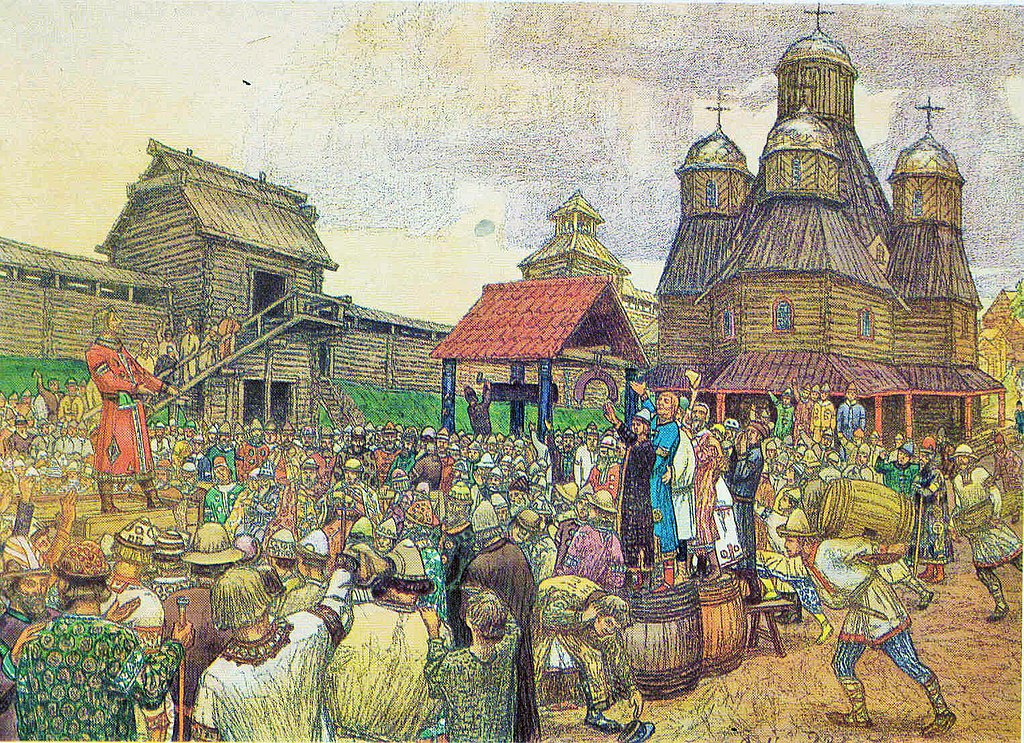
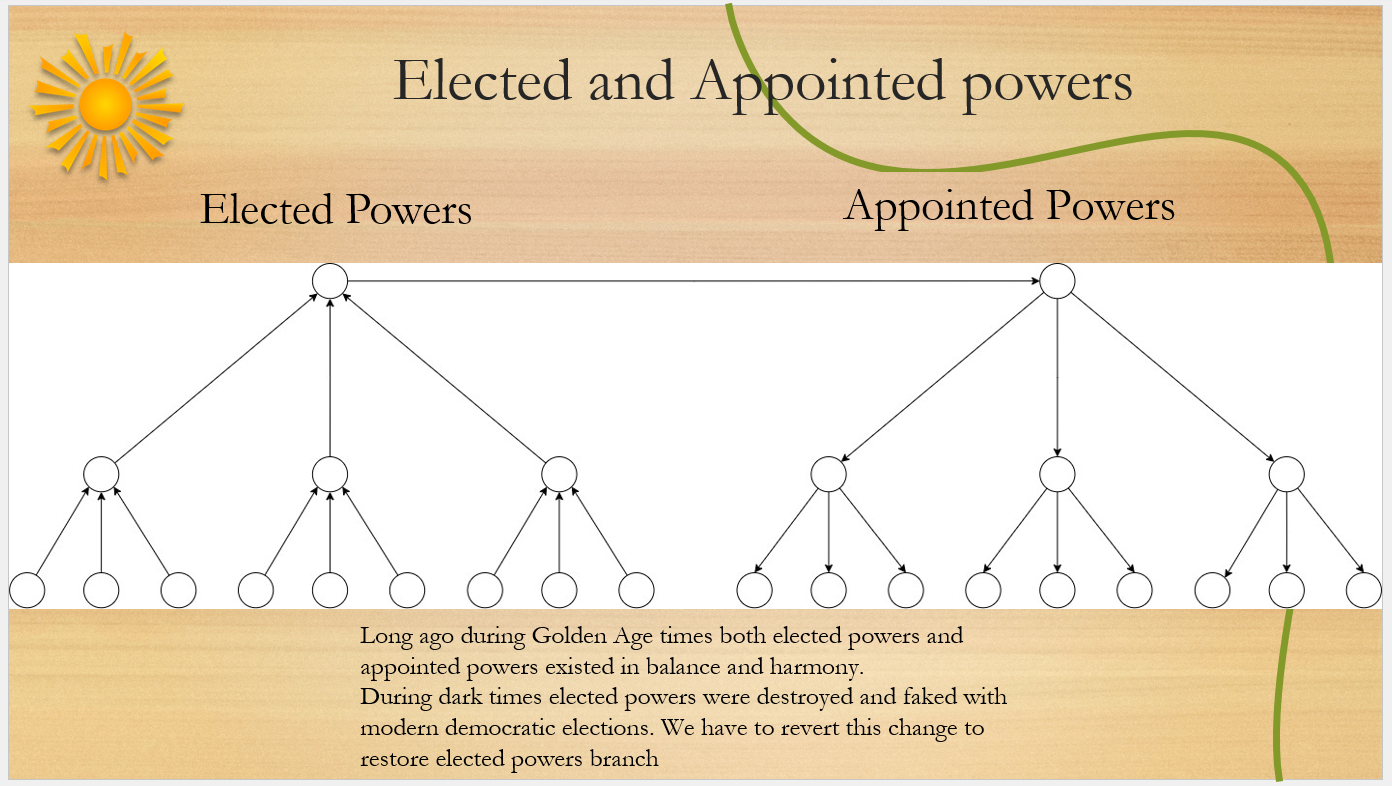
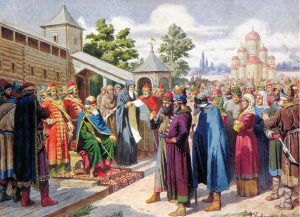 A Kopa man is a leader of his household. He is chosen as a mature man (50+ years) who is native by birth to the area he represents. He must have a grandson from his son (not from a daughter) to carry his family name. The man must be a head of the clan (the head of his family, his children and his grandchildren and their families), “rodan” in Rusian. “Rodan” this was the Kopa mature man, and all the rest were under him/report to him: brothers, sisters, women, and so on. A mature man must have his own household and provide for himself completely autonomously and independently, be a strong master.
A Kopa man is a leader of his household. He is chosen as a mature man (50+ years) who is native by birth to the area he represents. He must have a grandson from his son (not from a daughter) to carry his family name. The man must be a head of the clan (the head of his family, his children and his grandchildren and their families), “rodan” in Rusian. “Rodan” this was the Kopa mature man, and all the rest were under him/report to him: brothers, sisters, women, and so on. A mature man must have his own household and provide for himself completely autonomously and independently, be a strong master.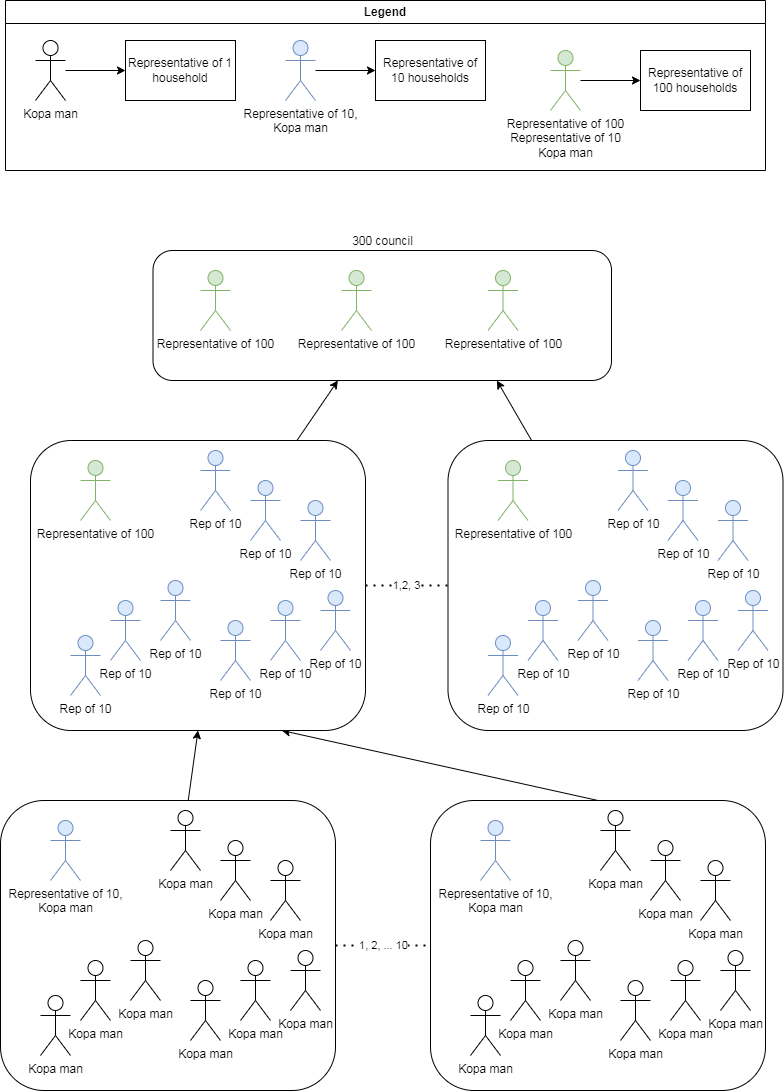


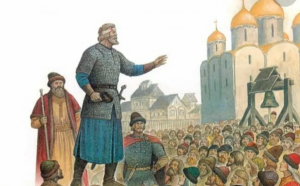 Direct Rule of the people — power, organised according to the principles of Veche/Kopa Law, solved the following tasks:
Direct Rule of the people — power, organised according to the principles of Veche/Kopa Law, solved the following tasks: